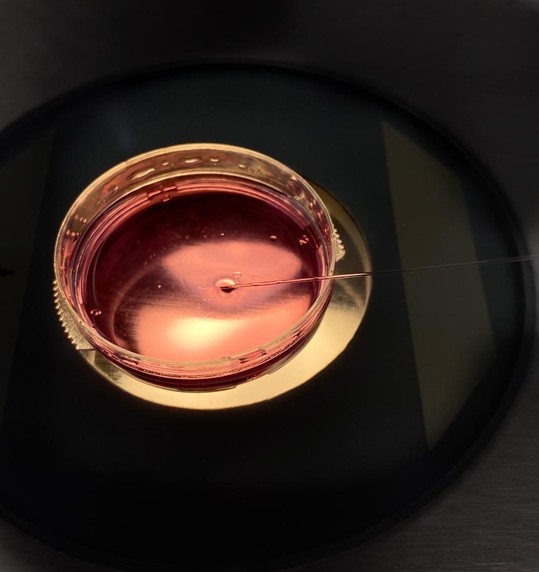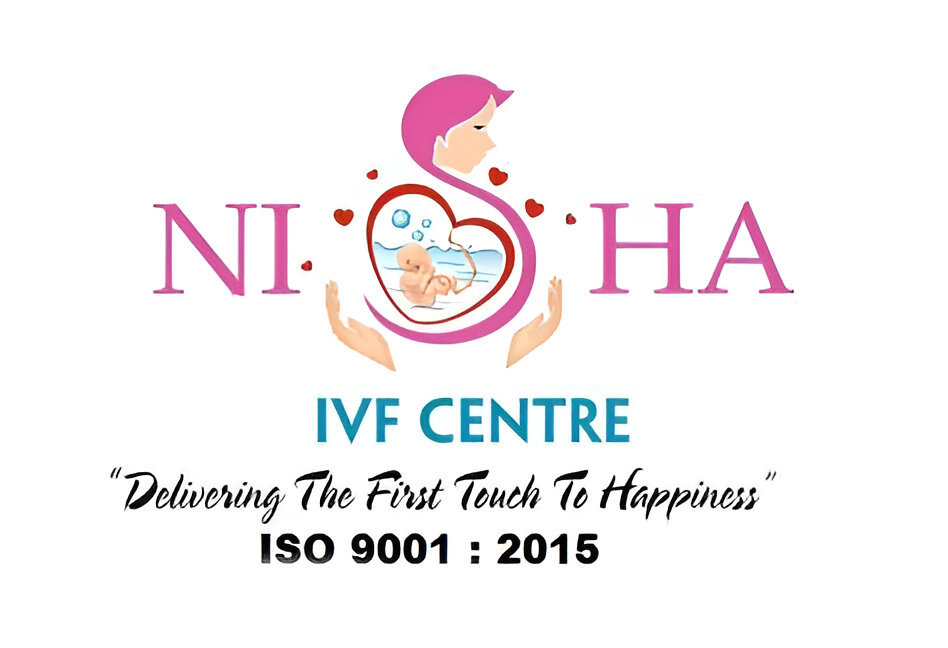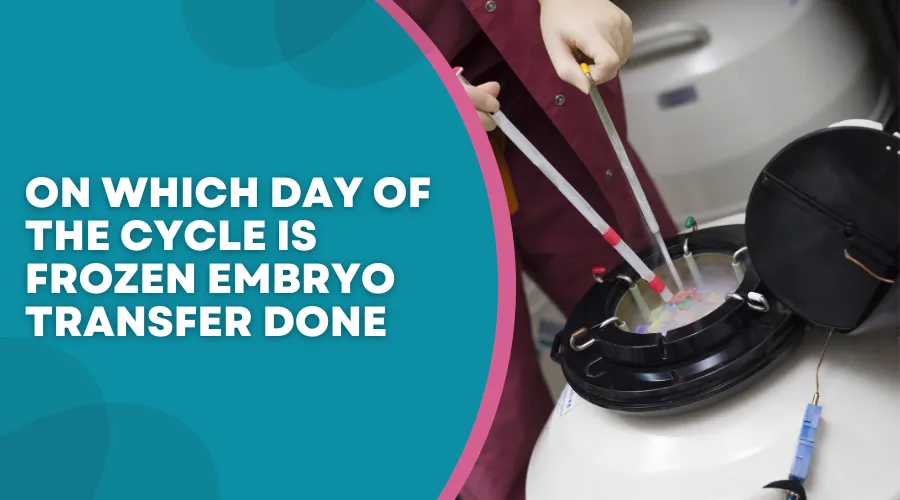When undergoing IVF, the frozen embryo transfer (FET) stage often comes with anticipation and questions, especially around timing. A common concern couples have is: On which day of the cycle is frozen embryo transfer done?
At Nisha IVF Centre in Ahmedabad, we place special emphasis on personalised treatment. According to Dr. Nisarg Patel, a trusted fertility expert at the clinic:
“Frozen embryo transfer success depends largely on when the embryo is placed in the uterus. Even a single day’s mismatch between the embryo’s development and the endometrial lining’s readiness can reduce implantation chances.”
This blog offers clarity on FET timing in both natural and medicated cycles, with practical tips to support your journey.

Why Does the Timing of Frozen Embryo Transfer Matter?
FET works best when the uterus is hormonally and structurally prepared to receive an embryo. A narrow window, known as the “implantation window,” opens when the endometrium is most receptive. Transferring the embryo outside this period—too early or too late—can significantly affect outcomes.
Hormonal balance plays a major role here. Both estrogen and progesterone influence the uterus’ receptivity, and the endometrial lining thickness for frozen embryo transfer is carefully monitored. The goal is to reach an ideal range of about 7–14 mm, along with a triple-layer (trilaminar) pattern, which is considered most favorable for implantation.
Want to ensure your FET is perfectly timed? Schedule a consultation at Nisha IVF for a customized embryo transfer calendar.
Understanding Your Cycle Before FET: Natural vs. Medicated
There are two main approaches to FET: natural and medicated cycles. In a natural cycle, the embryo transfer is scheduled based on your body’s natural ovulation. This method is ideal for women with regular periods and predictable ovulation patterns.
In contrast, a medicated or hormone replacement therapy (HRT) cycle involves giving estrogen and progesterone to artificially prepare the uterus. This offers more control over timing and is recommended for women with irregular cycles or hormonal imbalances. Understanding this difference is important when considering the natural vs medicated frozen embryo transfer route.
When is FET Done in a Natural Cycle?
In a natural cycle, your doctor closely monitors follicular growth and tracks the LH surge, which signals ovulation. Typically, ovulation occurs around day 14. Based on the stage of your embryo, the transfer is then scheduled either three or five days later.
For a Day 3 embryo, transfer is typically done on Day 17, and for a Day 5 embryo, on Day 19. This synchronization ensures that the embryo and the endometrium are developmentally aligned, a key factor in successful implantation.
This method is straightforward and avoids medications, but it requires precise monitoring and flexibility with scheduling.
When is FET Done in a Medicated (HRT) Cycle?
In a medicated cycle, estrogen supplements are usually started on Day 2 or 3 of your menstrual cycle to help the endometrium grow. Once the lining reaches the desired thickness, progesterone is introduced. The embryo transfer is then timed based on how many days of progesterone the embryo would naturally need.
For example, a Day 5 embryo is transferred after five days of progesterone supplementation. So, if progesterone begins on Day 14, transfer would occur on Day 19.
This approach provides greater control over timing and is often preferred for scheduling convenience and for patients with a history of irregular cycles or failed natural cycle FETs.
How Doctors Decide the Best Day for Your FET
Several factors go into selecting the ideal day for frozen embryo transfer. These include the type of embryo being used (Day 3 vs Day 5 embryo transfer timing), the quality and thickness of the endometrial lining, and your response to either natural or medicated protocols.
In some cases, doctors may also conduct an Endometrial Receptivity Array (ERA) to pinpoint the exact window when your uterus is most receptive. This test can be especially helpful for those with repeated implantation failure.
“We assess each patient’s unique biology—hormonal profile, uterine readiness, and embryo development—to make the transfer as precise as possible,” says Dr. Nisarg Patel.
What If My FET Date Changes?
It’s completely normal for the FET date to shift slightly. Patients often worry: What if frozen embryo transfer date changes?
These changes can occur if ovulation is delayed, the lining isn’t thick enough, or hormone levels fluctuate. Rather than risking a poorly timed transfer, your doctor may adjust the timeline by a day or two or even cancel the cycle for optimal results.
Although disappointing in the moment, these adjustments are made to enhance success rates and protect the integrity of the process.
Day-by-Day Example Timeline (Natural & Medicated)
Let’s look at a sample frozen embryo transfer cycle timeline for both natural and medicated cycles:
Natural Cycle Example
- Day 14: Ovulation
- Day 17: Transfer for Day 3 embryo
- Day 19: Transfer for Day 5 embryo
Medicated Cycle Example
- Day 2–13: Estrogen
- Day 14: Progesterone begins
- Day 19: Day 5 embryo transfer
These timelines help doctors synchronize the embryo’s developmental stage with the uterine lining’s readiness, improving the chance of implantation.
FAQs: Timing & Success
Does timing affect frozen embryo transfer success rate?
Yes. Poor timing can lead to failed implantation even with good-quality embryos.
What is the ideal endometrial lining thickness for frozen embryo transfer?
Typically between 7–14 mm with a trilaminar appearance.
Which is better: Day 3 vs Day 5 embryo transfer timing?
Day 5 (blastocyst) transfers are closer to natural implantation and may have slightly higher success rates.
Tips to Be Ready for Your FET Date

Preparation is just as important as timing. Here’s how to prepare for frozen embryo transfer both physically and mentally:
Eat a balanced diet rich in antioxidants and good fats. Focus on leafy greens, nuts, berries, and whole grains. Avoid processed foods, caffeine, and alcohol—especially in the days leading up to the transfer. Hydrate well and get adequate rest.
Gentle physical activity such as walking or prenatal yoga can help manage stress. Emotional well-being plays a big role in reproductive health, so don’t hesitate to seek support or counseling if needed.
Final Takeaway: The Right Day = Higher FET Success
To recap: On which day of the cycle is frozen embryo transfer done? In a natural cycle, it’s typically Day 17 or 19 based on ovulation. In a medicated cycle, it’s calculated from the start of progesterone supplementation—often Day 19 for Day 5 embryos.
“When FET timing is personalized and precise, it maximizes the embryo’s chance to implant and thrive,” concludes Dr. Nisarg Patel.
At Nisha IVF, we combine scientific accuracy with compassionate care to guide every patient through a successful FET experience
Frequently Asked Questions
On which day of the cycle is frozen embryo transfer done?
Day 17–19 in natural cycles, or based on progesterone days in medicated cycles.
Does timing affect frozen embryo transfer success rate?
Yes. The better the timing, the higher the chance of implantation.
What if frozen embryo transfer date changes?
It’s normal and often necessary to optimize conditions for success.
How to prepare for frozen embryo transfer?
Follow medical advice, reduce stress, and eat a fertility-friendly diet.
Disclaimer: The information shared in this content is for educational purposes only and not for promotional use.
References
- ASRM – FET Guidelines
- Cleveland Clinic – FET Process


